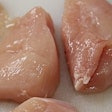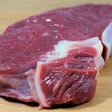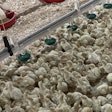JBS CEO Joesley Batista announced at a BMO Capital Markets conference in May that his company was deleveraged, flush with cash, and ready for new acquisitions. Batista made good on that pledge in September by signing an agreement to pay $800 million for 64% of the shares of the reorganized Pilgrim’s Pride, which is expected to come out of bankruptcy in December.
Referring to the company’s readiness to make acquisitions in a recessionary economy, he said, “Strategically, one of the biggest advantages of JBS is that we’ve been able to be ahead of the market for a long time.”
Perhaps born as much from opportunistic readiness – with Pilgrim’s Pride battered and in bankruptcy – as strategic insight, JBS’ move into poultry underscores the reality that poultry’s global future is here. And that future, at least for the top tier firms, is transnational and multi-protein.
Brazil-based JBS launched an “internationalization” strategy in 2005 by acquiring Swift Argentina and continued through 2008 with 11 other red-meat acquisitions, included among them Swift Foods (U.S. and Australia), Inalca (Italy), Tasman Group (Australia) and Smithfield Beef (U.S.). JBS also merged with global beef and dairy company Bertin in September.
The move by the beef and pork giant into the poultry sector mirrors the decade-earlier entry into red meats by Tyson Foods, but JBS will have an immediate and significant poultry bastion in the U.S. market. Tyson’s current production-and-marketing presence in Brazil, by comparison, is much smaller.
Rationale behind the deal
“Why get into the poultry industry? Mainly because we recognize in Pilgrim’s Pride the best option to start ... in the poultry business in a leadership position, ready to keep growing,” Batista said in announcing the acquisition.
JBS Investment Relations Officer Jeremiah O’Callaghan explained further, “It’s an opportunity to enter into the poultry industry immediately at a level where we have scale, where we are one of the largest companies in the world, acquiring a company whose net revenues in 2008 were $8.5 billion. We think it is important to have that sort of scale immediately. It will help us integrate this business with our other businesses.
Chart: Global ranking of protein companies
“The distribution system of Pilgrim’s Pride will definitely dovetail with our plans in speeding up our downstream integration and coming closer to our customers and customizing and adding value to our products, which will result in higher margins.”
The company plans an IPO in January, and the proceeds, in part, are to be invested in an expansion of the JBS USA distribution platform.
“Pilgrim’s Pride combined perfectly with our IPO strategy because the distribution platform can distribute beef, pork and poultry in the future,” Batista said.
The JBS executives said they plan to grow exports of poultry products out of the U.S. through JBS/Bertin contacts and offices around the world.
Going global to compete
One industry expert is wondering why JBS didn’t get into poultry sooner. “JBS is big in beef and pork. I guess the question is – why did they wait so long to get into poultry?” said Paul Aho, an agribusiness economist.
With the announcement in September of JBS purchasing Pilgrim’s Pride, and Marfrig’s buyout of Seara, the agri-food industry is becoming increasingly global and diverse. He points to these moves as proof that companies must be global to compete.
Chart: JBS S.A. income by business unit
“They’re combining beef, pork and chicken, and of course I’m sure that they want to diversify into poultry in the U.S. and maybe in Brazil, as well,” he said.
“In the future, if you’re going to be one of the global leaders, you would need to be in the U.S., Brazil and China.”
Marketing and distribution
JBS’ global footprint is not just about economies of scale for production, Aho said, it also means economies of scale for global marketing and distribution.
Jim Budzynski, managing principal of investment and consulting firm MacroGain Partners, echoed that idea, saying, “It gives JBS the potential of doing what Tyson Foods has started to do, which is to think outside one protein category and have a more holistic approach to the marketing and distribution channel. The channel is consolidating and is looking for fewer, bigger suppliers who have the ability to put multiple proteins under one roof and go to the channel with broad solutions.”
The prototypes: Tyson and JBS
While there are similarities between Tyson Foods and JBS, there are also differences.
Farha Aslam of Stephens, Inc., said, “Tyson and JBS each have an international growth agenda, but the two agendas are different.
“Tyson is focusing on poultry for international growth. The key markets that Tyson is interested in are China, India, Mexico and Brazil.
“JBS’ international growth strategy is to get closer to its customers by developing a global marketing and distribution system.”
Aslam said JBS’ growth strategy is much less protein specific and more structural.
“Historically, JBS has been focused on beef, but its international growth strategy is not protein specific. They are trying to develop an efficient export structure. The greater the volume that they put through that distribution system, the more efficient and cost effective that structure is.”
Distribution opportunities, challenges
Wesley Batista, CEO of JBS USA, said there are sizable synergies to be tapped in the acquisition of Pilgrim’s Pride.
“We believe there are $200 million, conservatively, in synergies. The poultry business will be run as a separate business unit by the current CEO Don Jackson, but we expect to combine corporate areas. We expect to achieve a lot of synergies in our distribution strategy, which involves accessing more end users for our three proteins.”
New competitive landscape
The move by the top firms to a global, multi-protein platform is expected to put additional pressure on regional, single-protein companies.
Osler Desouzart of ODConsulting in Brazil Desouzart said, “If you do not become a global player you risk becoming a niche player.” Can firms survive at a regional and national level? “The answer is that you can survive even at the local level, but you shall have a local, regional and national level size, and it will be hard to stick your head out of the trench. Hard but not impossible,” he said.
Budzynski also sees challenges ahead for single-protein, regional companies, but he pointed to inherent advantages they enjoy.
“Customers are increasingly looking for the kind of logistical and operational benefits that come from bundling two or three proteins in the marketing and distribution channel,” Budzynski said. “However, there will continue to be room for regional players because of their fresh positioning, particularly due to the consumer demand for locally sourced products. The real question is whether that sector ends up being 10% of the market or 40% of the market. A big part of the answer has to do with how well the big players integrate their operations and run their strategies. If they do a ho-hum job of execution, I think the regional/local players can continue to be a very sizable piece of the market. It’s really about execution on the part of both groups that will determine what the ratios are,” he said.
The poultry imperative
Finally, Desouzart observes that world meat intake is moving towards more poultry. That trend is being helped because the diets of people in developing countries are moving to more animal protein, and more particularly poultry meat, which is more affordable. At the same time, consumption in developed countries is stagnating or even declining.
“The future of the food industry is not with those that are overeating but with those that do not eat. Africa and Asia shall account for almost 90% of the world demographic growth from today to 2050,” he said.
Desouzart projects that poultry production will surpass swine production around 2016, or even 2015 if China faces new animal health issues with their pork herd.
For beef companies wanting to avoid niche status, Desouzart said, getting into poultry and/or pork is not optional, it’s mandatory.


















